Rutinib Cream (Ruxolitinib)
$380.00 – $1,600.00Price range: $380.00 through $1,600.00
| Pack Size | Price | Price / Unit | Quantity | |
|---|---|---|---|---|
| 1 Pack | $380.00 | $380.00/ unit | ||
| 3 Packs | $1,050.00 | $350.00/ unit | ||
| 5 Packs | $1,600.00 | $320.00/ unit |
Want to order in bulk / B2B price ? | Send Inquiry |


| SKU | 11411 |
| Manufacturer | Drug International Limited |
| Categories | Skin Care |
| Delivery Time | 10 - 14 Working Days |
| Strength | 30mg |
Introduction to Rutinib Cream
Rutinib Cream is a topical medication primarily used to manage skin conditions such as vitiligo and atopic dermatitis. It contains ruxolitinib, a Janus kinase (JAK) inhibitor, which works by blocking certain enzymes involved in the body’s immune response. This action helps reduce inflammation, itching, and abnormal skin pigmentation often associated with autoimmune skin disorders.
This cream is typically prescribed when other treatments like corticosteroids or light therapy have not been effective. It is applied directly to the affected areas of the skin, allowing targeted treatment with minimal systemic absorption. Patients usually begin to notice improvements in skin texture and color within a few weeks of consistent use, though full results may take longer.
While Rutinib Cream is generally well-tolerated, it may cause mild side effects like redness, burning, or irritation at the application site. It’s important to use it under a healthcare provider’s guidance to avoid complications or misuse. Regular monitoring ensures that the treatment is effective and safe over time. Ruxolitinib Cream is manufactured by Drug International Limited.
Uses of Ruxolitinib Cream
Ruxolitinib Cream, marketed as Rutinib, is primarily used for the following purposes:
- Atopic Dermatitis
- Chronic Hand Eczema
- Other Inflammatory Skin Disorders
- Reduction of Inflammation and Itching
- Improvement of Skin Symptoms
It is important to use Ruxolitinib Cream as directed by a healthcare provider and to follow up regularly to monitor the effectiveness and manage any potential side effects.
How Does Rutinib Cream Works?
Ruxolitinib being formulated as a cream for topical use. However, if such a formulation has been introduced after my last update, it’s crucial to consult a healthcare professional or refer to updated and reliable medical sources for the most current information regarding the mechanism of action of Ruxolitinib cream.
For Ruxolitinib in its oral form, which is known for treating certain blood disorders, its mechanism of action involves inhibiting enzymes involved in cell signaling pathways, particularly those associated with abnormal cell growth. This action helps to suppress the abnormal proliferation of cells that occurs in conditions like myelofibrosis and polycythemia vera.
Side Effects of Ruxolitinib Cream
Common Side Effects
- Skin Irritation
- Dryness
- Itching
- Erythema
- Local Discomfort
Serious Side Effects
- Severe Skin Reactions
- Signs of Infection
- Allergic Reactions
- Systemic Effects
- Severe Dermatitis
Dosage of Rutinib Cream
Ruxolitinib formulated as a cream for topical use. If such a formulation has been introduced after my last update, it’s crucial to consult a healthcare professional or refer to updated and reliable medical sources for the most current information regarding the dosage of Ruxolitinib cream.
Your doctor will determine the dose of ruxolitinib you are to take. Your doctor may recommend that you take your medication twice a day. Please be sure to follow the instructions precisely. Depending upon your response and the presence of side effects your doctor may alter the dose of ruxolitinib.
How To Manage Side Effects?
- Communicate with Your Healthcare Provider
- Follow Dosage and Application Instructions
- Maintain Good Hydration and Nutrition
- Get Regular Exercise
- Get Adequate Rest
- Use Over-the-Counter Remedies
- Seek Professional Guidance
- Maintain Regular Follow-up Appointments
Warnings & Precautions
1. For External Use Only:
- Rutinib Cream is strictly for topical application and should not be ingested or applied to the eyes, mouth, or mucous membranes.
2. Avoid Contact With Eyes:
- If the cream accidentally gets into your eyes, rinse thoroughly with water. Immediate medical attention may be needed in case of irritation.
3. Do Not Apply on Broken or Infected Skin:
- Use only on intact skin unless directed by your doctor. Avoid applying on open wounds, cuts, or infected areas.
4. Wash Hands After Application:
- Always wash your hands before and after applying the cream to avoid accidental spread to other parts of the body.
5. Do Not Cover With Bandages Unless Directed:
- Unless advised by your doctor, do not cover the treated area with dressings or bandages.
6. Use Only As Prescribed:
- Do not use more than the recommended dose or frequency. Overuse can lead to complications or reduced effectiveness.
7. Monitor Skin Response:
- Observe how your skin responds to the treatment. Report any unusual changes in the treated area to your doctor promptly.
8. Keep Away From Heat Sources:
- Do not expose the cream to high temperatures or flames, and keep the cap tightly closed when not in use.
Storage
- Store Rutinib Cream at room temperature, typically between 15°C to 25°C (59°F to 77°F).
- Keep away from direct sunlight, heat sources, and humid areas like bathrooms to maintain the cream’s stability.
- Always close the tube cap tightly after each use to prevent contamination or drying out of the cream.
- Do not refrigerate or freeze the cream, as extreme temperatures may alter its effectiveness.
- Store in a safe location to avoid accidental ingestion or misuse.
- Always check the expiration date before use. Do not use the cream beyond its expiry.
Frequently Asked Questions
1. Can I Stop Using Rutinib Cream If My Skin Improves?
Ans. You should not stop using Rutinib Cream abruptly without consulting your doctor. Even if your skin shows signs of improvement, continuing the treatment as prescribed helps prevent recurrence and ensures complete recovery.
2. Can Rutinib Cream Be Used During Pregnancy Or Breastfeeding?
Ans. The use of Rutinib Cream during pregnancy or breastfeeding should only be done under medical supervision. There is limited safety data, so consult your doctor to weigh the potential benefits and risks before using Rutinib Cream in such conditions.
3. Is A Prescription Required To Buy Rutinib Cream?
Ans. Yes, Rutinib Cream typically requires a valid prescription from a licensed healthcare provider. It is a medicated product designed for specific skin conditions and should not be used without medical supervision.
4. How Long Does It Take For Rutinib Cream To Show Results?
Ans. The time Rutinib Cream takes to show visible improvements varies depending on the condition being treated. Some users may see changes within a few weeks, while others may require a longer duration of consistent use. Always continue treatment as advised.
| Pack Size | 1 Pack, 3 Packs, 5 Packs |
|---|---|
| Price/Unit | $320/unit, $350/unit, $380/unit |
1 review for Rutinib Cream (Ruxolitinib)
Add a review Cancel reply
Related Products
No related Products Found

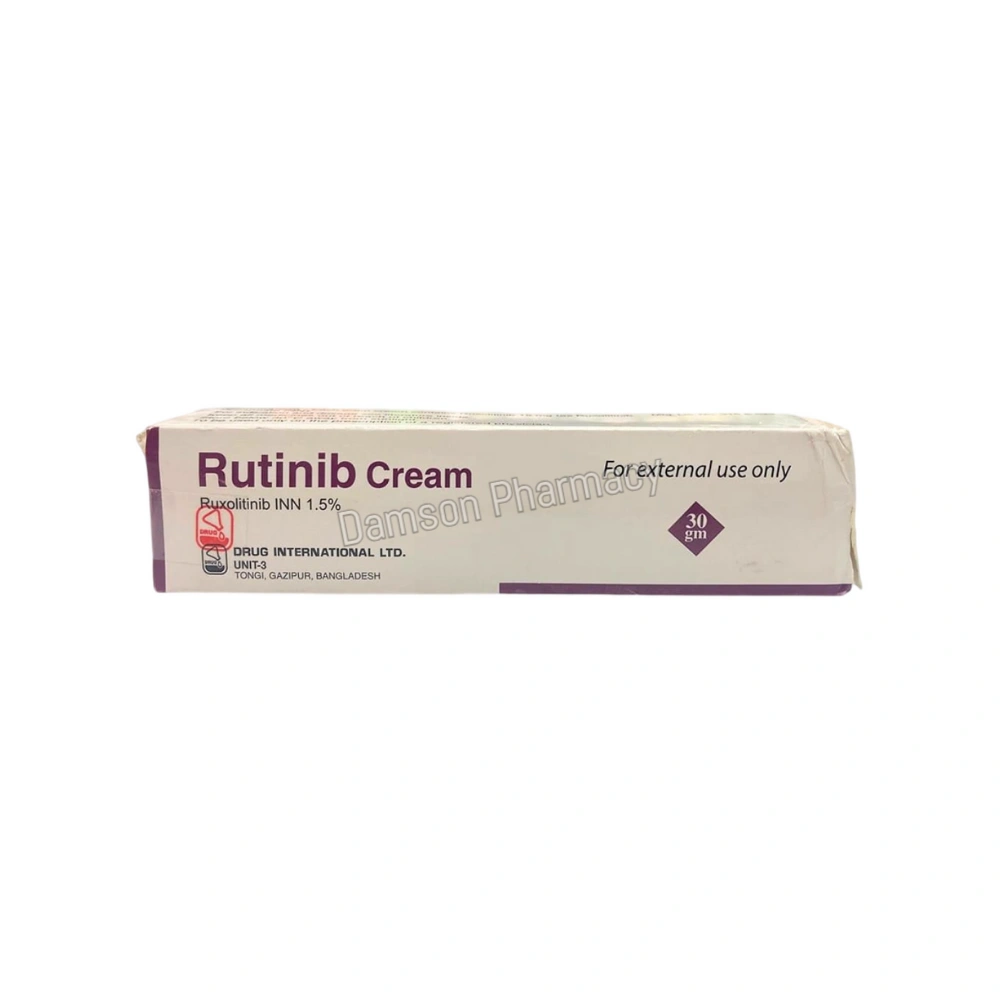



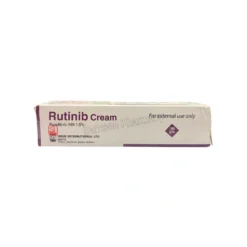
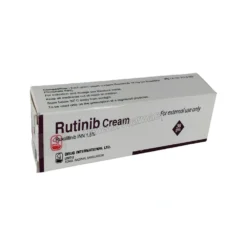

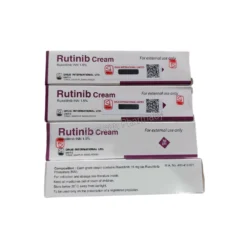
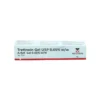
Beau Sydes –
Excellent vendor. Quick response. On time shipment. Highly recommend.